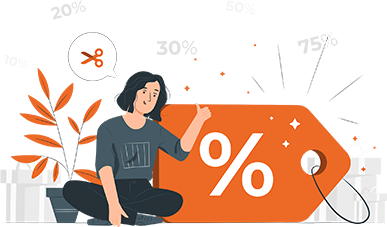Rise of eBooks
Top advantages of eBook over traditional book

Printed books vs digital books is an evergreen debate. There are and will be people who support printed books and some electronic books (eBooks). With the rise in the number of tech-savvy people, every service provider is digitizing their services to cater to the needs of this large community of digital users.
Publishing is also one of the industry which has entered the digital era to make reading more convenient for people.
Schools and different organizations are increasingly moving towards eBooks for training purposes because eBooks are better equipped to provide an engaging learning and reading experience to users. Nonetheless, Print publishers are still standing strong despite the invasion of digital devices and their seemingly growing popularity.
If you compare the two, you would find that although printed hardcover books are much loved for their originality and the feel of holding an actual book, eBooks are more functional and far better in terms of ease in carrying around. Let us see some advantages that eBooks have over the traditional printed books.
The Top 10 Advantages of eBooks are:
1) Many books, One device.
eBooks are portable and lightweight, makes it easy to carry around. Instead of carrying multiple bulky books together, one eBook reader can hold thousands of eBooks. It saves a lot of space both in your home as well as in your bag. One does not have to worry about the storage limit. A single device is efficient enough to carry any number of books you want. Students, be it school or college, benefit the most out of it as they do not have to carry a bag full of books every day. It allows the user to store plenty of books on any device, which can be way more than anyone can read in their lifetime.
2) Accessible Everywhere.
eBooks can be downloaded and stored for later use. A person can carry the eBook around and read them whenever they want. Students and employees can go through the learning material while at home and even while travelling or in the office/college. It is convenient for people on the go. Some eReaders come with the option of offline accessibility, allowing people to use it even in the absence of the internet connection.
Unlike printed books which have to be purchased from the bookstore, with time lost in waiting for delivery or travelling to the bookstore; readers can easily access any eBook anytime and anywhere.
3) Easily Updates.
The contents on the eBooks are mostly cloud-based, meaning it can be updated anytime and anywhere. Authors and publishers can always add up-to-date information, providing users with the latest digital content. This saves reprinting costs and the time involved in the process.
4) Shareable Content.
You can share the eBook contents with multiple users at a time. The social feature on the e-book allows sharing of content, which is not possible with printed books.
You can only share a printed book with one person at a time, but an eBook is shareable with many people at once. Students and employees can use this feature to collaborate with their companions.
5) Augmented Reality Experience.
Augmented reality has taken the eBook experience to a whole new level. Different texts and images can be embedded with an augmented three-dimensional visual which pops up on the user's screen. Readers can view a computer-generated 3D model of the image, which makes reading and learning a much more impressive experience.
The user only has to point the device at the image or text, and an enhanced version of the image will be displayed on the screen. Many educational institutes and organizations are adopting this technology into their eBooks to enhance user experience.
6) Easy on the Eyes.
eReaders these days come with features where you can adjust the brightness of the screen according to your preferences. Many eReaders even read in the dark feature, with lights that won't strain their eyes, and neither would they disturb others around you. Users can even change the fonts of the text according to their need. They can increase or decrease the size of the font. eBooks ensure that your eyes are taken good care of.
7) Read Aloud Feature.
eBooks have been designed with text to speech features. This allows people to listen to the eBooks if they are too busy to read it, for example, while driving or while doing some work.
This feature is also helpful for children and adults with a learning disability or with visual impairment. It is also helpful for the user to understand how a particular word is pronounced.
8) Interactive Elements.
By introducing interactive features in an eBook makes the reading experience a more engaging one. eBooks can be equipped with audios and videos. External links can be included to offer extra information.
The user can even bookmark a certain page or find a word quickly and effortlessly. It also allows users to make footnotes. There are multiple such interactive features which can be included.

